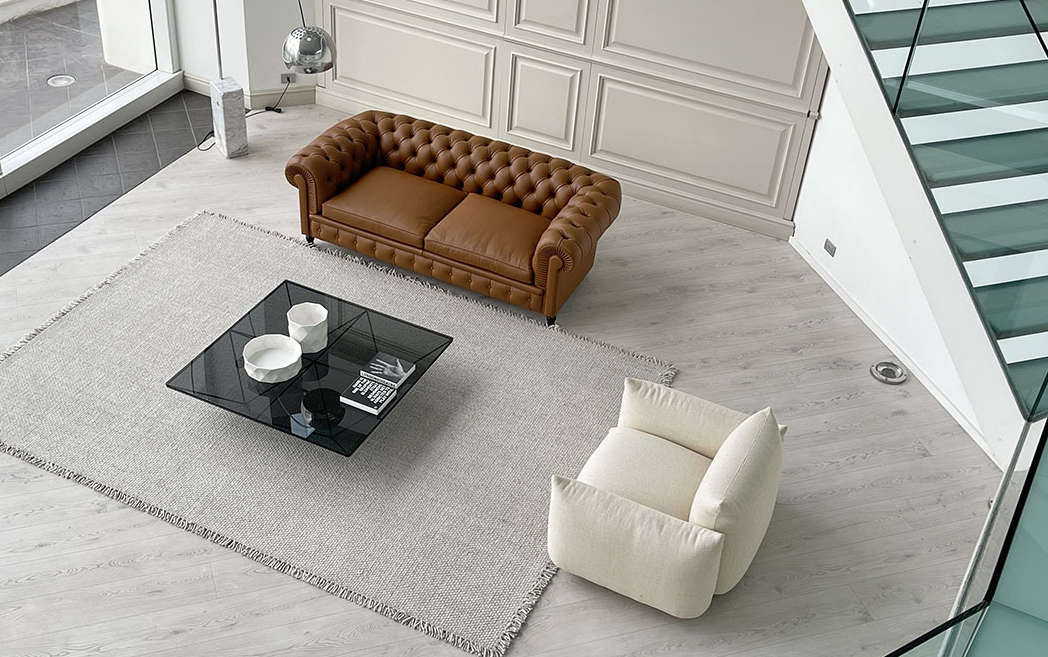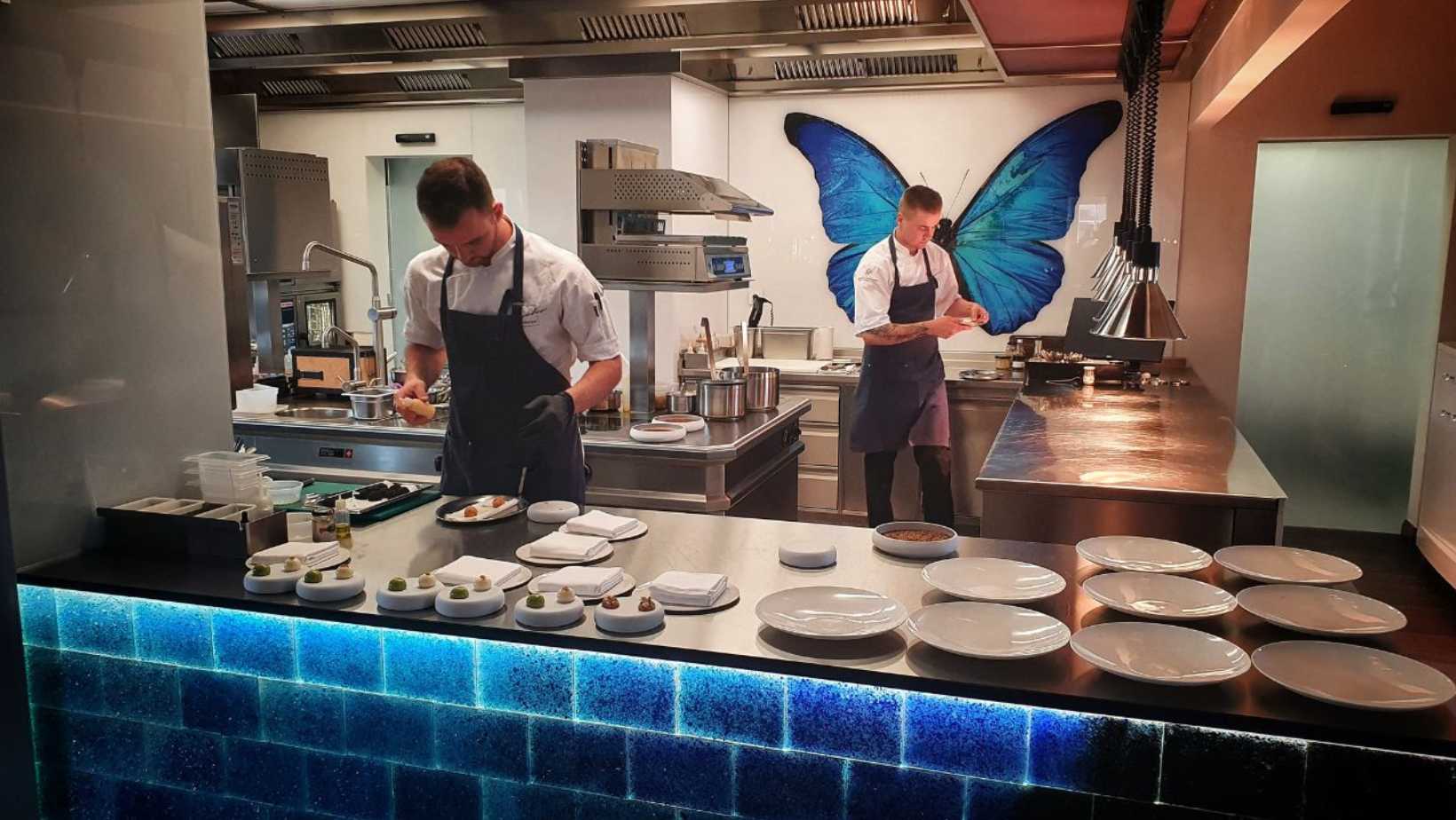The Czech Home Aesthetic: The Interior Design Trends to Watch
Prague Morning

A Baxter sofa placed in a cozy reading corner exemplifies this shift towards curated, character-filled spaces. Alongside pieces like a Poliform armchair and a Cassina coffee table, Czech homes are integrating sophisticated yet comfortable designs. These evolving trends reflect a movement toward sustainability, craftsmanship, and adaptable living environments, mirroring the country’s commitment to innovation while respecting its artistic heritage.
The Rise of Eclectic Minimalism
For years, Czech interiors followed the Scandinavian-inspired minimalism of clean lines and neutral tones. Now, a warmer, more personal approach is emerging, influenced by Prague’s vibrant creative scene, from the DOX Centre for Contemporary Art to the annual Designblok Festival, which showcases cutting-edge design trends. The latest trend, often referred to as “eclectic minimalism,” maintains simplicity but incorporates softer textures, warmer colors, and more organic shapes.
Key elements include curved furniture (like a Royal Botania Organix Lounge Outdoor Sofa), layered textures (like the marble and wood combination in the Porada Ekero Rack Valet Stand), warm wood tones (Light oak, walnut, and beech for flooring), and earthy color palettes (consider the impact of a Poliform Manta Terracotta Leather Chair in a more traditional living room).
Sustainable and Natural Materials
Environmental awareness is playing a larger role in Czech households, mirroring the government’s increasing focus on sustainability initiatives and the EU’s Green Deal policies. Homeowners are favoring durable, responsibly sourced materials that enhance both aesthetics and sustainability.
Popular sustainable materials include reclaimed wood, with brands like Nature Design and Gervasoni using such elements for their high-end products; and eco-friendly textiles, aligning with the current growing commitment to eco-conscious living. Another rising trend are the so-called terrazzo surfaces: made from recycled stone chips, terrazzo is making a comeback in kitchens and bathrooms. While historically associated with Italian apartments, it is now a rising trend in Prague flats and renovated First Republic-era buildings.
Vintage Revival and Statement Pieces
Modern Czech interiors are incorporating vintage elements to add authenticity and charm, a trend that resonates with Prague’s deep appreciation for historical architecture, from Gothic and Baroque landmarks to Functionalist masterpieces. Vintage mirrors, rustic wooden tables, and refurbished cabinets provide a sense of history, echoing the restoration projects taking place in Prague’s historic districts. Sculptural pendant lights and oversized floor lamps act as focal points in minimalist spaces, inspired by Czech glassmaking traditions from regions like Bohemia.
Personalized gallery walls are another key-element especially for younger people: a curated mix of art, photography, and vintage prints adds character to interiors, often reflecting Prague’s thriving art scene, from the national museums to the latest independent exhibitions in Holešovice.
Flexible and Multifunctional Spaces
With remote work becoming more common, Czech homes are adapting to accommodate both professional and personal needs. Flexible layouts and modular furniture are now essential.
Popular solutions include modular shelving units, with systems like those from USM Haller allow for easy customization and adaptability. Convertible furniture are also a must-have: sofa beds, extendable tables, and fold-away desks maximize functionality, responding to the rise in urban micro-living. Open-plan living areas are being divided using shelving, curtains, or sliding panels to create designated work and relaxation areas.
The Influence of Czech Design Heritage
While contemporary trends dominate, Czech homes still celebrate their rich design history. Influences from the country’s Cubist, Art Nouveau, and Functionalist movements continue to shape modern interiors. Distinctive Czech design elements include Cubist-inspired furniture, with angular designs and geometric patterns remain a signature look in Czech interiors.
Renovations often highlight original features such as vaulted ceilings, exposed brick, and wooden beams.Furniture makers and designers like TON and Jitona preserve local woodworking techniques while adapting to modern aesthetics.
Czech interior design is striking a balance between tradition and innovation. By blending sustainability, functionality, and traditional aesthetics, modern homes in the Czech Republic are becoming more personalized and adaptable.
Whether incorporating vintage finds or investing in new high-quality furniture such as the one you can shop at Tomassini Arredamenti, these evolving trends are shaping the future of Czech interiors. With a growing appreciation for both heritage and contemporary influences, Czech homes are transforming into spaces that are not only stylish but also deeply reflective of personal identity and lifestyle preferences.
-
NEWSLETTER
Subscribe for our daily news










